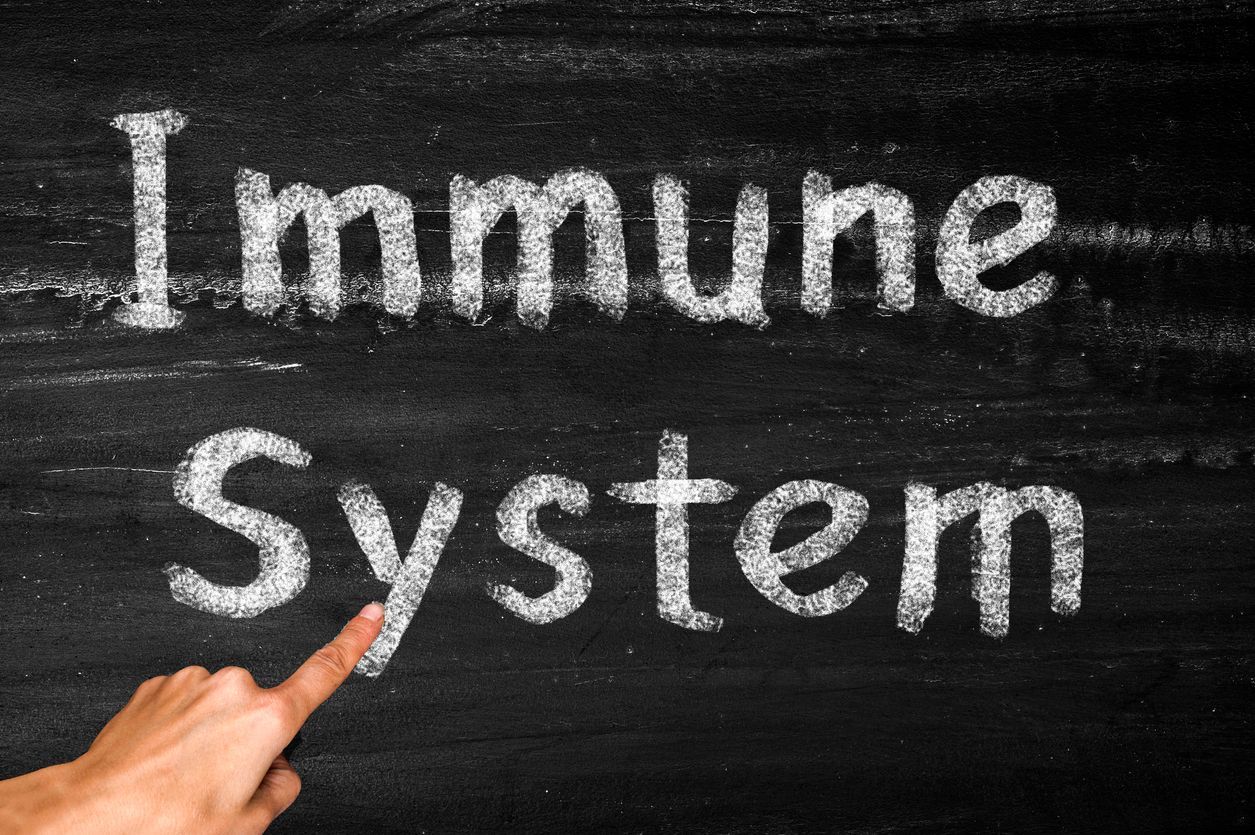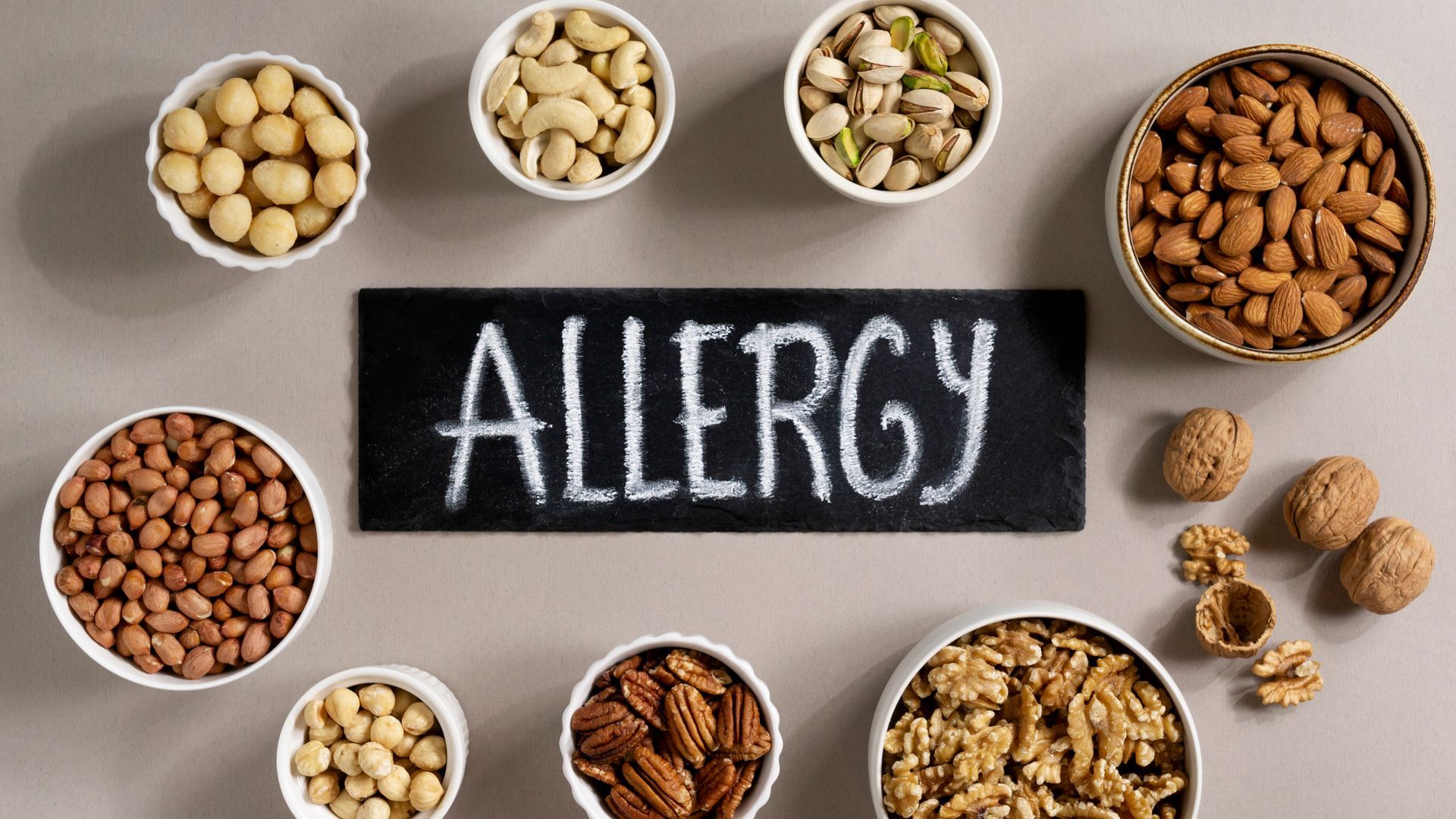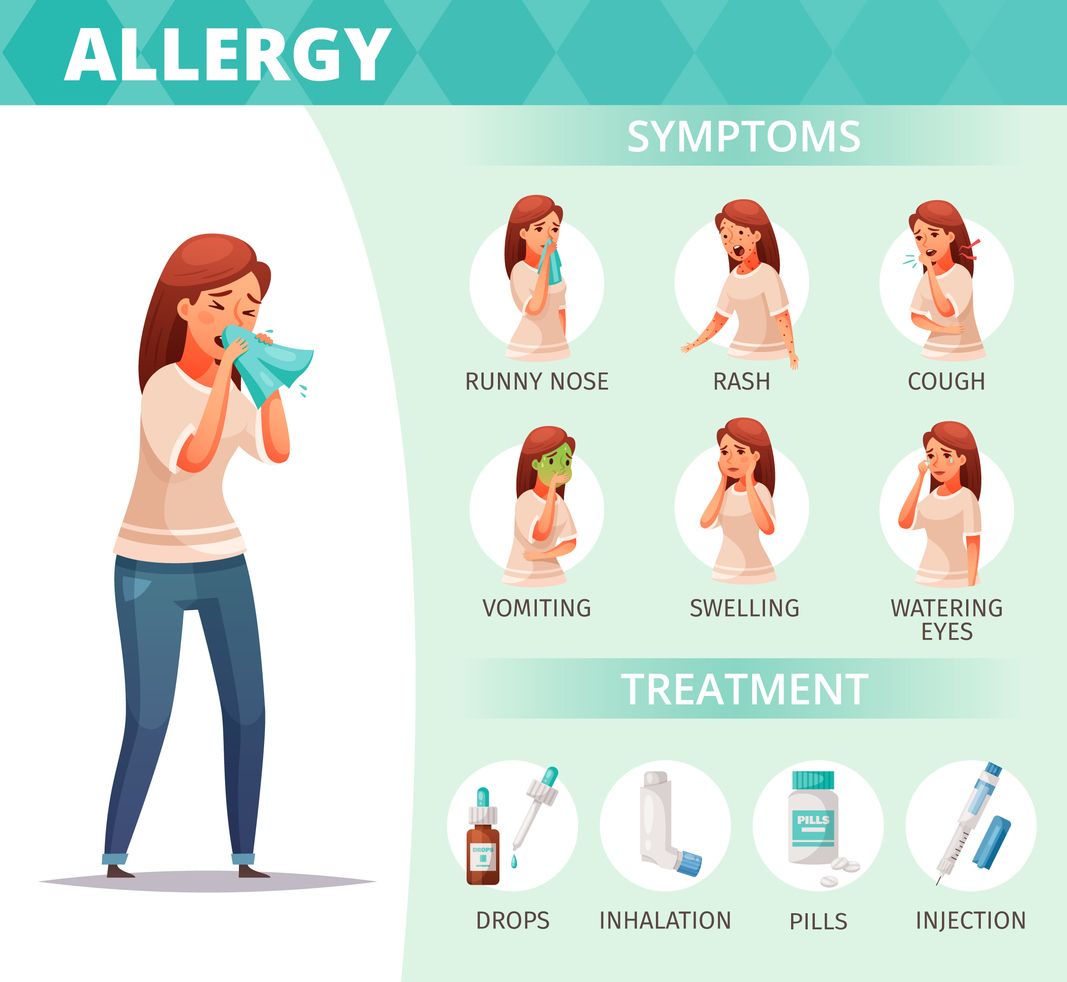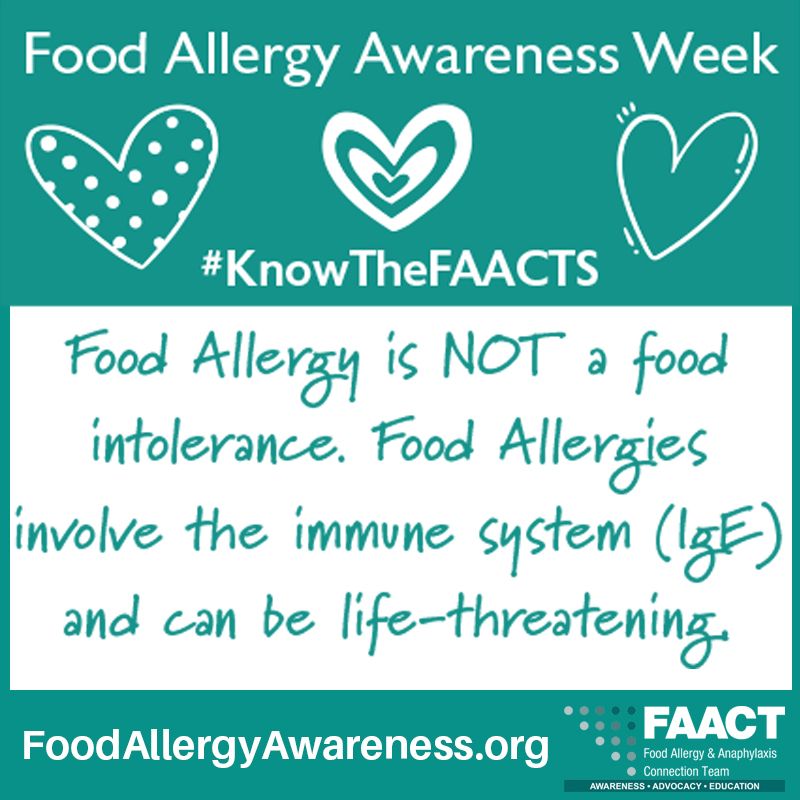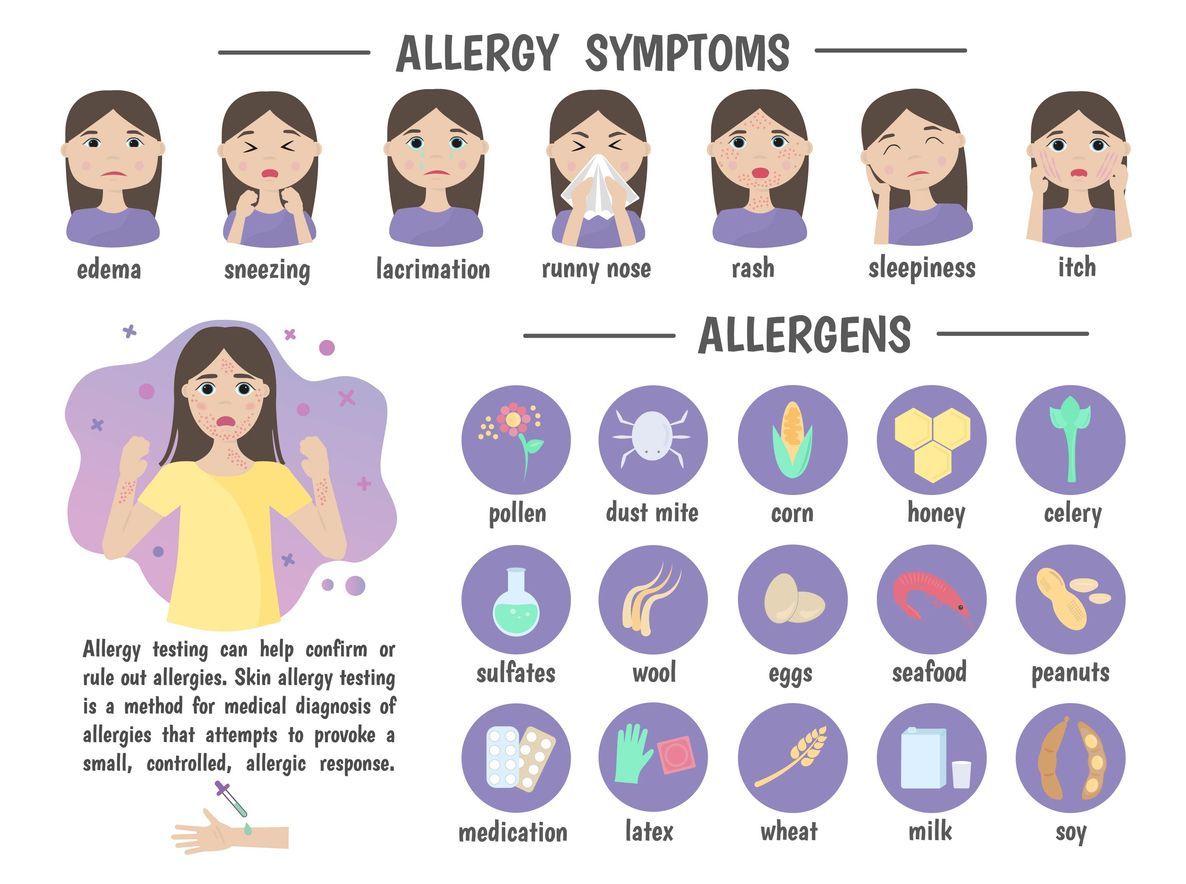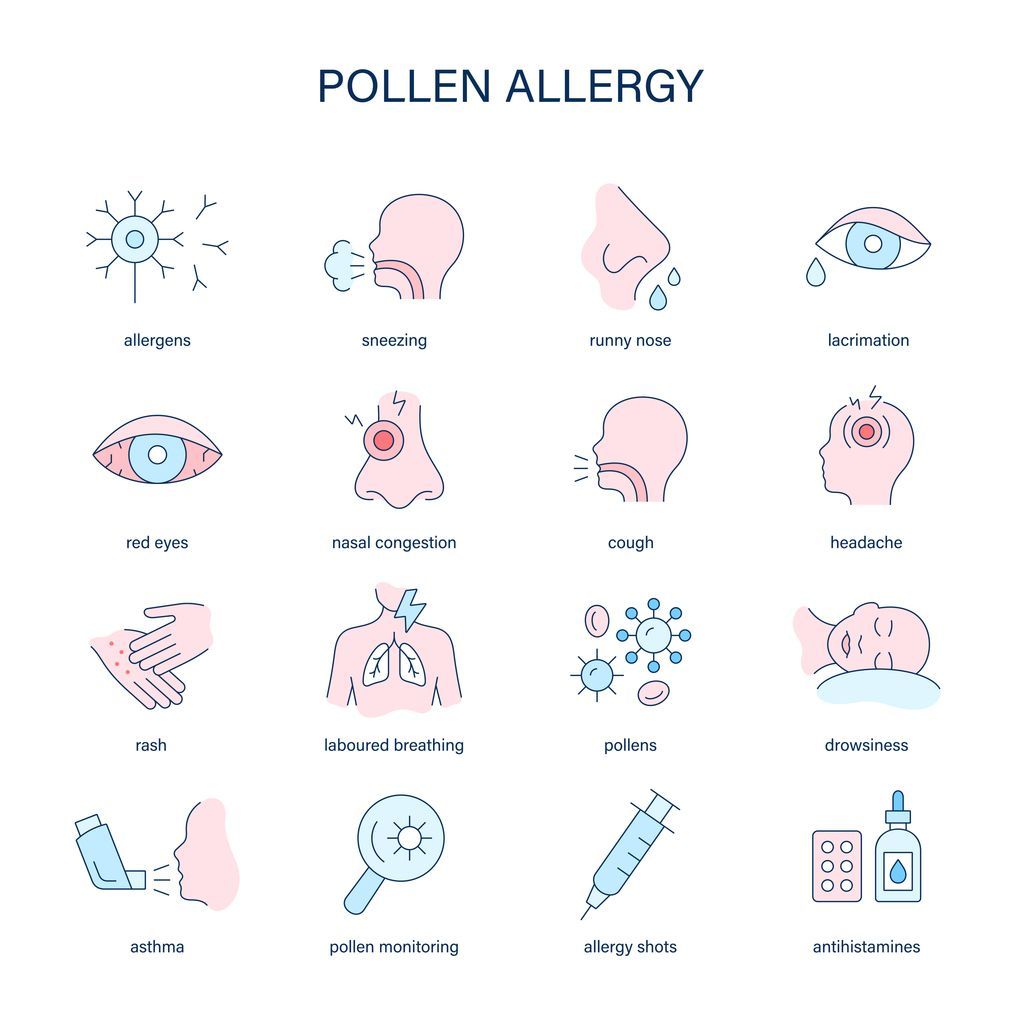Commonly Asked Food Allergy Questions
What causes food allergies?
Food allergies are caused by an overreactive response of the immune system to the proteins found in a food. Food allergies can start at any age but are more likely to be found in young children. Food allergies affect 8% of children and about 4% of adults. A person with food allergies can have reactions to even a very small amount of the food. These reactions are predictable upon exposure to the food.
What are common food allergy symptoms?
Food allergy symptoms usually occur within minutes of ingestion but can be delayed for hours. Food allergy symptoms can be mild and include but are not limited to:
- Hives or red itchy skin
- Stuffy nose, sneezing, itchy and teary eyes
- Nausea, stomach cramps
- Lip and face swelling
Severe and life-threatening food allergy symptoms, referred to as anaphylaxis, can occur. This can include but are not limited to:
- Voice changes, throat tightness
- Vomiting, diarrhea
- Shortness of breath, wheezing, chest tightness
- Loss of consciousness, dizziness, or confusion
If someone is experiencing acute symptoms of food allergy, an epinephrine auto-injector should be used immediately if available and call 911.
What are the most common food allergies?
There are nine foods that cause most food allergies in America. Here is a list of food allergies:
- Peanuts
- Eggs
- Cows’ milk
- Tree nuts
- Wheat
- Soy
- Sesame seed
- Fish
- Shellfish
This is by no means an exhaustive list of food allergies. There are other foods can cause allergic reactions, but are less common.
When and how should you introduce potentially allergenic foods?
For children who do not have any risk factors, early introduction of foods and pediatric food allergy testing can help lower risk for development of food allergies. The American Academy of Pediatrics recommends that infants are exclusively breast fed for at least the first 6 months of their life. During this time, mothers should not restrict their diets by avoiding potentially allergic foods. If infants are formula fed, the use of hydrolyzed formulas has not been shown to prevent allergies. Dietary guidelines outlined in 2020 recommend introducing nutrient dense and potentially allergenic foods at 6 months of age.
What conditions increase risk for food allergies?
There are a few conditions that increase the risk for developing food allergies. The figure below shows conditions and risk of someone developing a food allergy.

Is it possible to outgrow a food allergy?
Some food allergies have a higher likelihood of outgrowing than others. Children with egg, wheat, soy, and milk allergies have a good chance of outgrowing them with the proper interventions. With proper treatment, 60-80% of patients with milk or egg allergy can outgrow the allergy by the age of 16. If you or your child has an egg, soy, wheat or milk allergy, make an appointment with us to discuss testing and treatment options. Food allergy testing can include skin prick testing and bloodwork to determine the patient’s chances of reacting to a food. Based on history and testing results we may discuss ways to safely introduce these foods back into the patient’s diet or do challenges in the office as outlined below. The earlier in their life interventions are made, the better chance the child has of outgrowing their food allergy.
What are food challenges and when are they done?
When it is suspected someone has outgrown a food allergy, or there is low suspicion of a food allergy based on history and testing, a food challenge may be done in the clinic. The challenge starts with the patient eating a very small serving of the food. If there is no reaction with the first dose 2-3 larger doses are given over the course of about two hours. If the patient has no reactions, they pass the challenge and should consume the food regularly to maintain the tolerance to that food. If there is a reaction, symptoms can be promptly and safely treated in the office.
What food allergies are less likely to be outgrown and what can be done to manage them?
Someone with a peanut, tree nut, or seafood allergy is much less likely to outgrow the allergy. These are also foods that are more likely to cause severe symptoms of anaphylaxis. If you or your child has a peanut, tree nut, or seafood allergy make an appointment with us to discuss testing and treatment options.
Peanut Allergy
Peanut allergy is one of the most common food allergies in U.S. children. Those with a peanut allergy only have a 20% chance to outgrow the allergy. This usually makes peanut allergies a lifelong disease. There are two options for someone with a peanut allergy. One is to continue to avoid all forms of peanut and carry an epinephrine auto-injector in case of accidental ingestion. The second option is the peanut desensitization program at Iowa Allergy. Skin prick testing and blood work is done before starting peanut desensitization. Desensitization is a process that involves having the patient ingest extremely small amounts of peanut, in increasing doses, over the course of several years with the goal of reducing or eliminating the patient’s reactions to peanuts. Desensitization works by training the immune system to tolerate or accept peanuts. Desensitization should only be done under the supervision of a trained allergist. Desensitization is more effective when started at a younger age.
Tree Nut Allergy
Those with tree nut allergy only have about a 10% chance to outgrow the allergy. Patients may be able to eat some tree nuts but not others. We can do testing in the office to determine if there are any tree nuts the patient could safely eat. Currently, the best plan for those with tree nut allergies is to avoid the nuts they are allergic to and carry an epinephrine auto-injector in case of accidental ingestion. Iowa Allergy is developing a tree nut desensitization protocol, like the peanut protocol, which will hopefully be ready in 2023 or 2024.
Seafood Allergy
Those with seafood allergy only have about a 5% chance to outgrow the allergy. Seafood includes shellfish and finned fish. Patients may be able to eat some fish or shellfish depending on their testing results and history. The best option for a confirmed allergy is to avoid the seafoods the patient is allergic to and carry an epinephrine auto-injector in case of accidental ingestion. Blood work may be done yearly to determine the patient’s reactivity to seafood.
Are you exhibiting food allergy symptoms? Looking for food allergy testing for yourself or your child? We would love to sit down and learn more about your food allergy symptoms and discuss potential treatment options, including our desensitization program.


